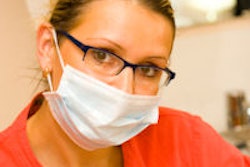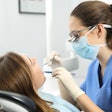As the Washington state Legislature considers whether to reinstate dental coverage for low-income adults and expand Medicaid as part of national healthcare reform, a Seattle TV report has captured some of the impact of the current lack of dental coverage.
Sarah Vander Beek, DMD, of Neighborcare Health in Seattle, told KING 5 in a report that aired February 11 that before the Legislature eliminated dental coverage for most low-income adults to help balance the state budget in 2011, adults came in for checkups and preventive care.
"Now they are coming at the end-stage of disease," Dr. Vander Beek told KING 5.
The Legislature's decision to eliminate dental coverage for 450,000 adults to help balance the budget "is backfiring," the KING 5 report said, noting that visits to emergency rooms for dental care are increasing and those visits "can cost 10 times what a dental checkup costs."
Eve Rutherford, DDS, the chair of Washington Dental Service Foundation, one of many organizations urging state lawmakers to restore dental care for low-income adults, said the KING 5 story brings welcome visibility to a critical healthcare issue.
"What the report showed is just the tip of iceberg -- 450,000 people have been without dental coverage for more than two years," Dr. Rutherford said in a press release. "Many of them are in pain and may not be able to work. If they have chronic diseases like diabetes, dental disease can contribute to medical problems that require hospitalization."
The Legislature has a unique opportunity this year, she added. The expansion of Medicaid as part of national healthcare reform will save the state more than $225 million annually because the federal government will fund existing state healthcare programs for low-income people.
"The Legislature can use a portion of these savings to restore dental coverage to Medicaid-eligible adults who lost it in 2011, and the federal government will then pay the full cost of dental care for people newly eligible for Medicaid," Rutherford said.
Altogether, a $14 million annual investment by the state will provide dental coverage for more than 700,000 people and pay huge dividends in financial savings and better health, she emphasized.



















